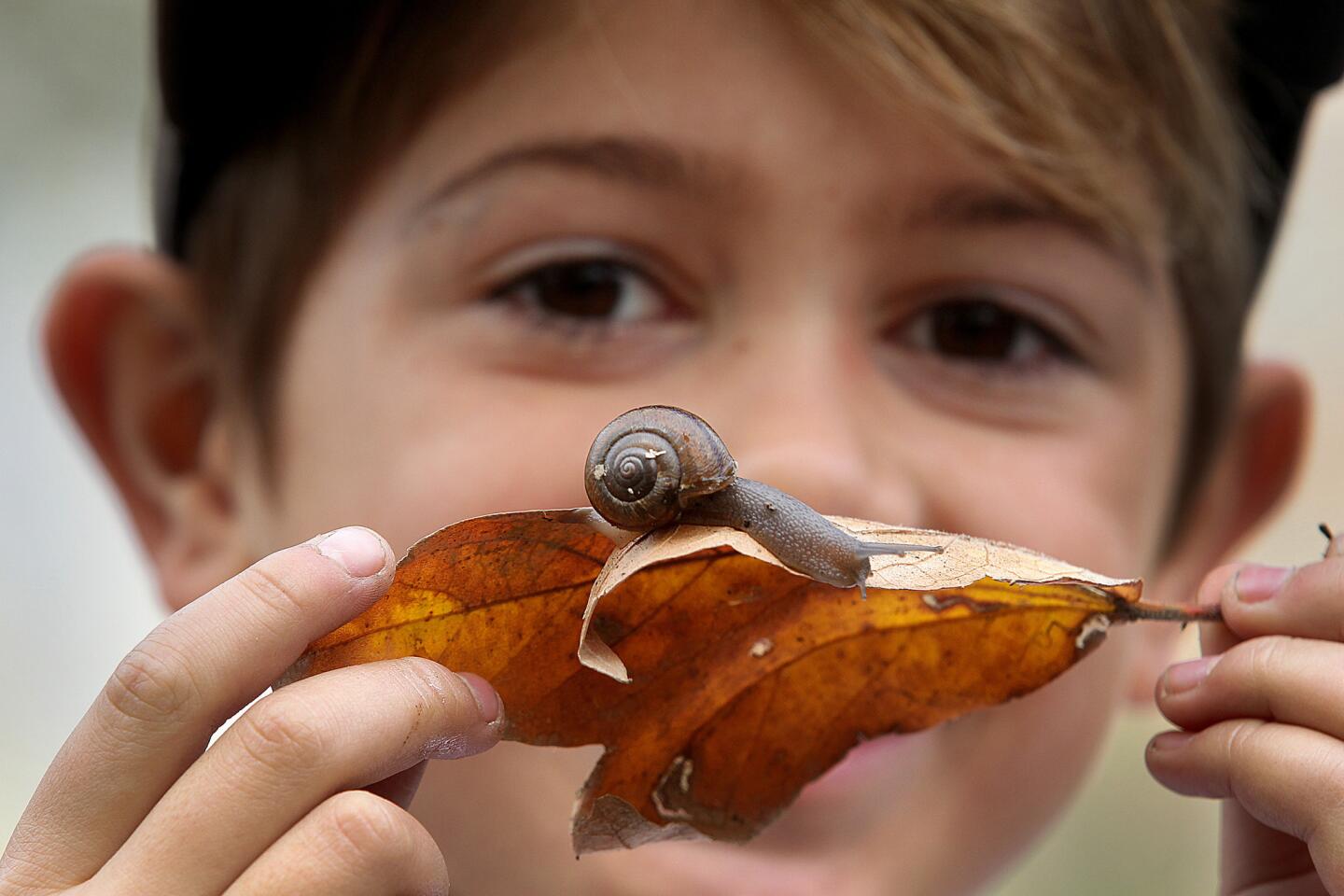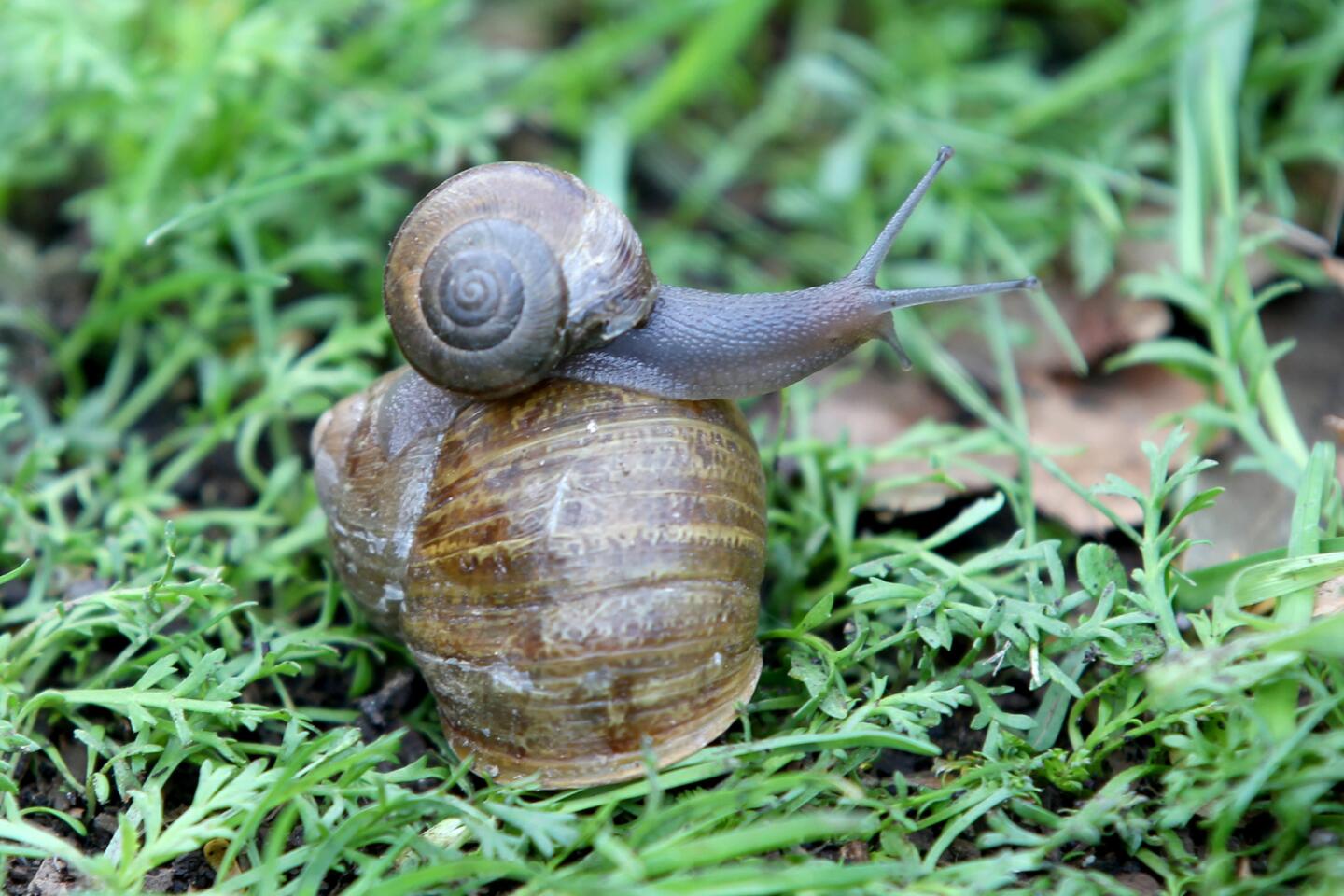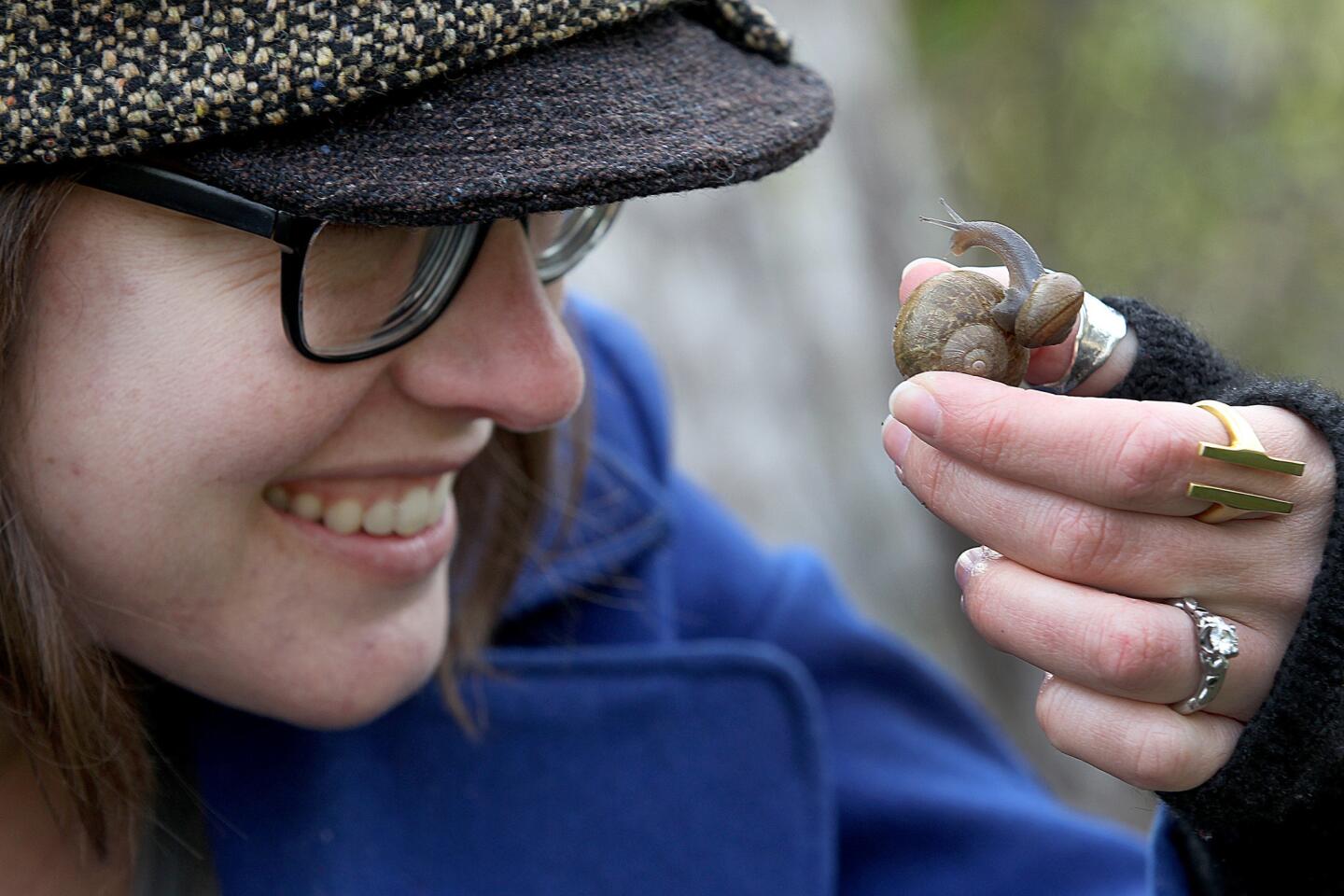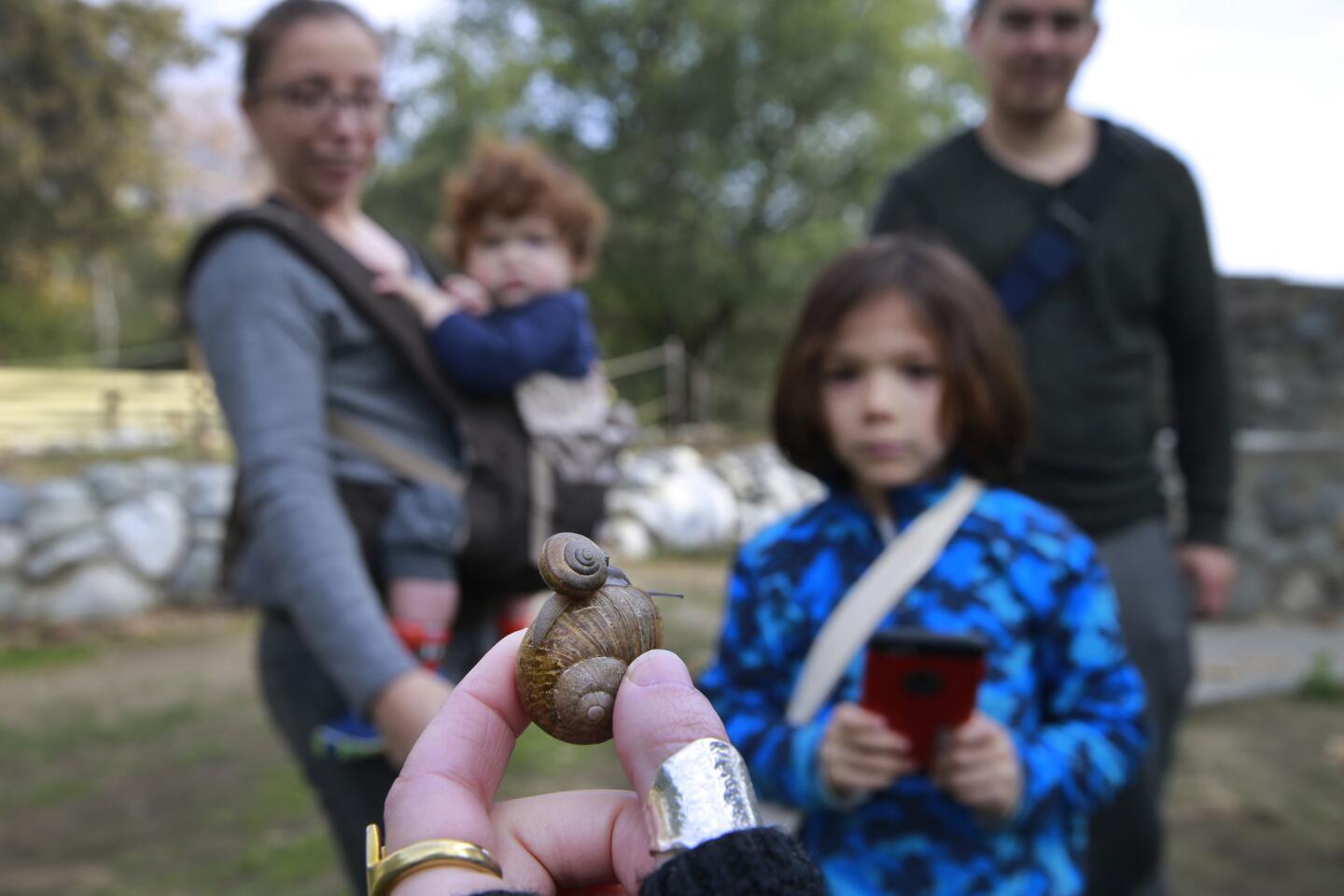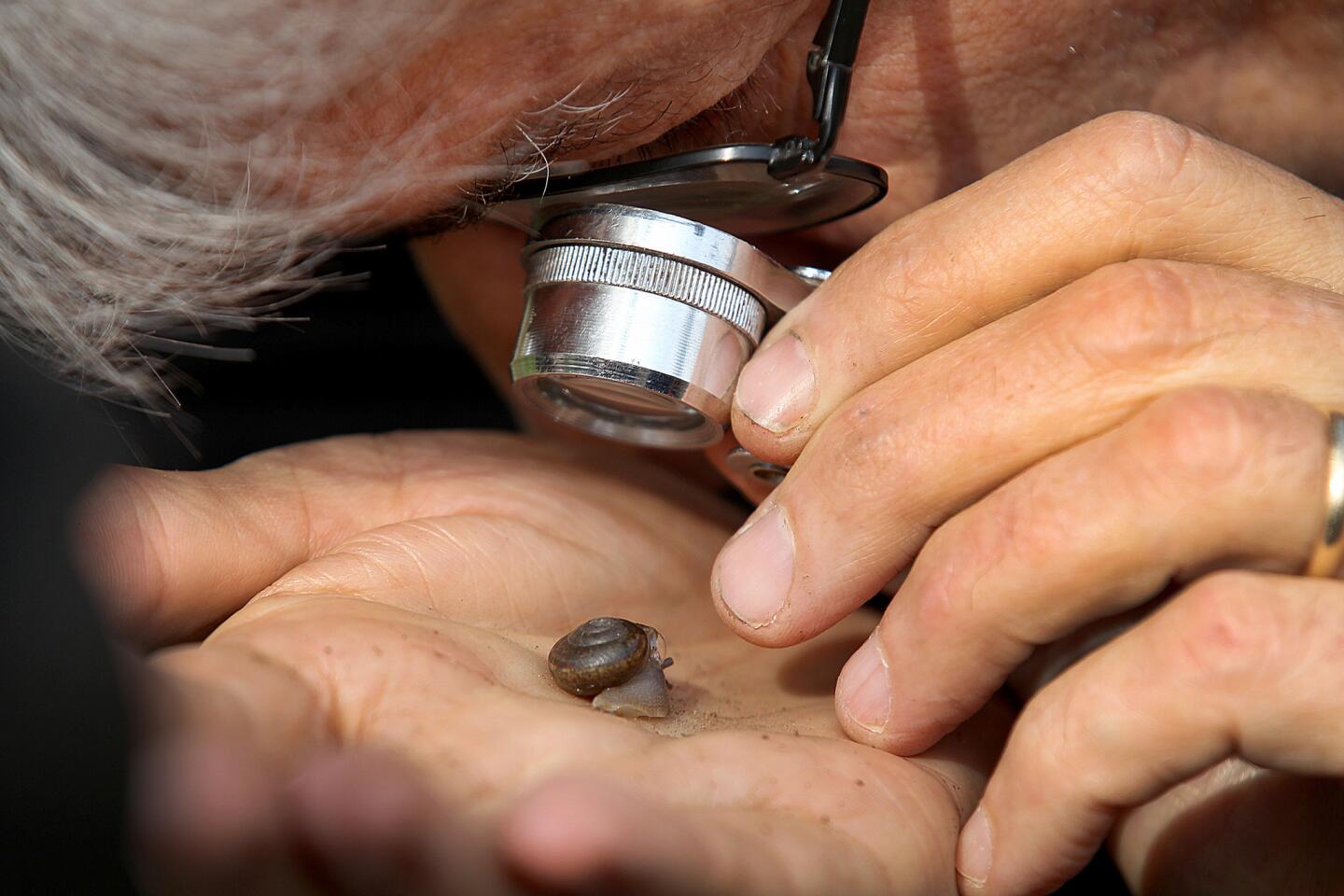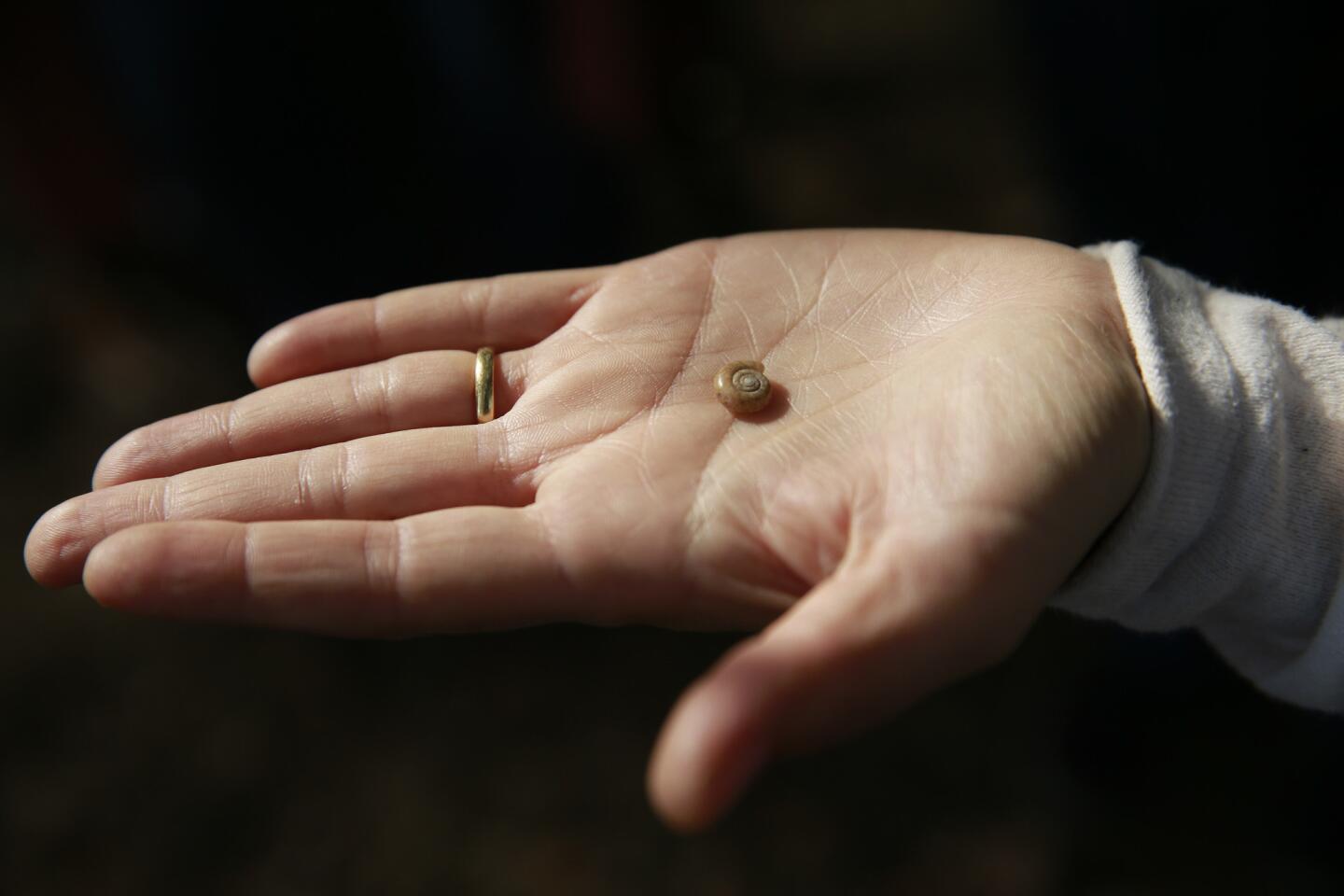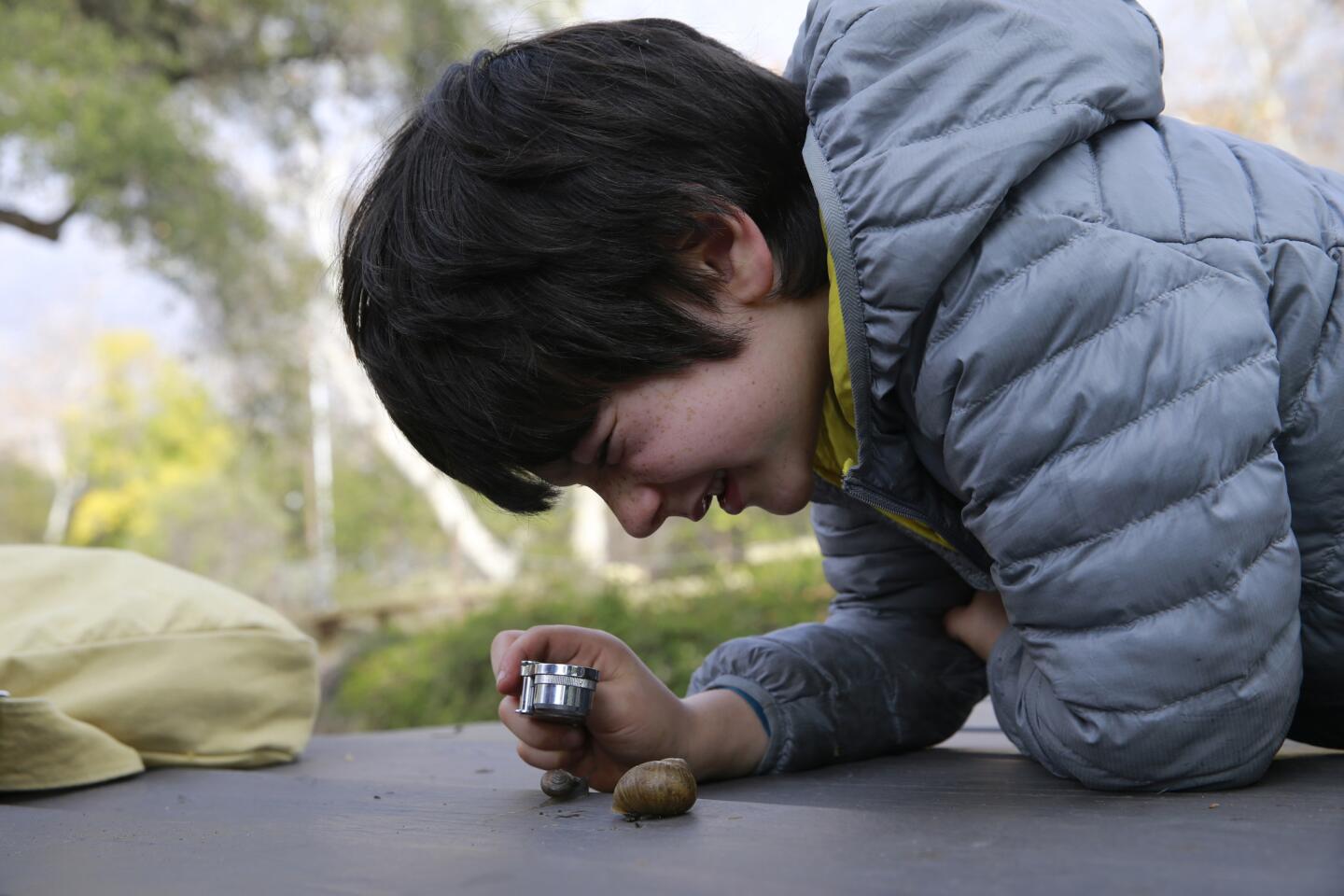Snail-hunting for the sake of science: The good, the bad and the slimy
- Share via
It’s hard for most people to get psyched about snails. They’re slimy. Their bodies bear a strong resemblance to phlegm. And our encounters with them often involve cursing the damage they do to our gardens.
But after spending a few hours among snail enthusiasts at the first-ever SnailBlitz, one’s perspective begins to shift.
The Southern California native Helminthoglypta tudiculata, for example, turns out to be a beautiful snail with a shimmering taupe body and an elegant, walnut-colored shell perched jauntily on its back.
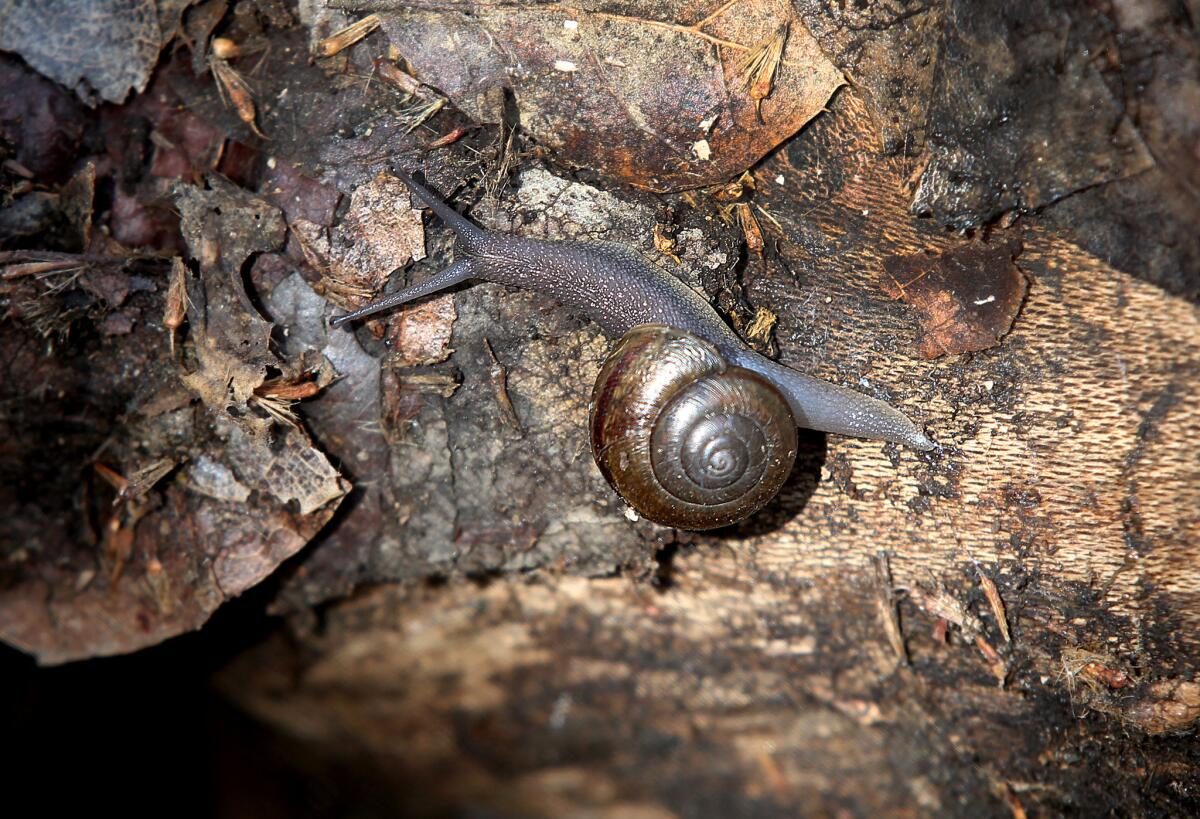
A snail crawls along a log.
Gaze into the black dots at the tips of its eye stalks, and you just might find yourself communing with an animal you previously thought to be one of the more repulsive creatures on Earth.
Or you might not.
“I have snail slime all over me, and it’s so gross!” said Molly Rysman of Highland Park, after letting one of the mollusks ooze over her hand on a recent Saturday.
Rysman and her 7-year-old son, Jack, were among the roughly two dozen citizen-scientists peering into bushes, turning over logs and poking into leaf litter on a quest to count snails in Eaton Canyon, just north of Pasadena.

Carmen Bermejo, 8, left, Ava Joanis, center, and Logan Joanis, were among roughly two dozen citizen scientists turning over logs and poking into leaves on a quest to count snails.
The SnailBlitz event was organized by the Natural History Museum of Los Angeles County to jump-start its SLIME project, which stands for Snails and slugs Living in Metropolitan Environments. It’s a citizen-science project that aims to catalog the diversity of land snails and slugs in Southern California.
“Snails in L.A. are a largely understudied group of animals,” said Jann Vendetti, the malacology curator at the museum and one of the organizers of SLIME. (Malacology is the study of mollusks, including snails and slugs.)
“There hasn’t been a comprehensive cataloging survey of snails and slugs here in 30 years, and there hasn’t been a really comprehensive cataloging ever,” she said.
Learning which species of snails call Southern California home is not only interesting from a biodiversity point of view, it’s also relevant for the region’s agricultural industry, Vendetti said. Though some introduced species might do nothing worse than annoy backyard gardeners, others could pose a big threat to citrus groves and other crops.
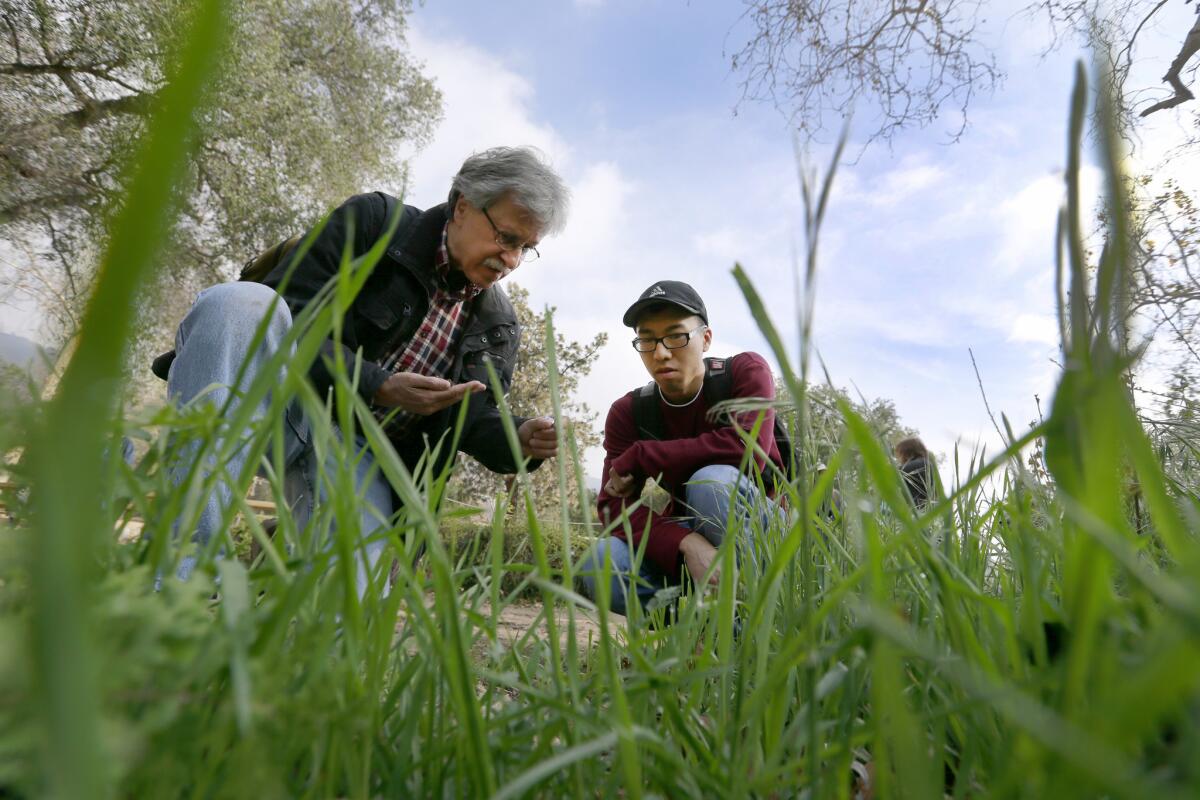
Phil Liff-Grieff, left, and Cedric Lee help find and identify snails with citizen scientists. Scientists anticipate that El Niño rains will bring more snails and slugs out of hiding over the next few months.
To find out what types of gastropods are living in greater Los Angeles, SLIME’s organizers hope to get 1,000 snail and slug identifications by April 16. The public is invited to take photos of the gastropods they encounter in their yards or on hikes and upload them to the iNaturalist website, where experts will identify them.
Southern California isn’t naturally suited to water-loving snails, but humans have made it more hospitable.
“Some of our urban environments like golf courses, public gardens and even people’s backyards are consistently watered,” Vendetti said. “If you have grass growing, you have the possibility of having pockets of snails and slugs.”
Many snails native to Southern California have adapted to the region’s dry weather by going dormant for months at a time, to keep their bodies from dehydrating. But experts anticipate that El Niño rains will bring more snails and slugs out of hiding over the next few months.
“El Niño changes things up, so we might see all sorts of native snails and introduced snails that have not had enough water to come out for a while now,” Vendetti said. “It’s exciting, at least for someone who studies snails.”
At Eaton Canyon, the excitement was palpable.
The first snail was discovered by illustrator Katie McKissick. It was an invasive European garden snail, which was originally brought to Southern California to be harvested as escargot.
“Is this your first snail in the wild?” Vendetti asked.
“Yes,” McKissick said. “It’s the first one I’ve found not on my driveway.”

Science blogger and illustrator Katie McKissick views two snails together during the SnailBlitz.
Over in a wet pile of leaves, nonprofit administrator and lay snail expert Phil Liff-Grieff was positively giddy as he watched half a dozen native snails glide along the underside of a rotting log, leaving silvery slime trails behind them.
“This is really exciting,” he said. “We can see different sizes and not too many empty shells. That means they’re thriving.”
Before the snail hunt, Liff-Grieff worried that the native snail population might have been decimated after so many years of drought. But at least in Eaton Canyon, that appears not to be the case.
“I’m just so happy to see them,” he said.
Cedric Lee, an ecology student at UCLA, showed him a tiny snail about 1 centimeter in length that he found on the same log.
“That’s a Discus rotundatus,” Liff-Grieff said. “We call that a giant micro-snail.”

Phil Liff-Grieff studies a snail. “This is really exciting,” he said. “We can see different sizes and not too many empty shells. That means they’re thriving.”
Though the overall mood was enthusiastic, the feeling that snails are kind of, well, gross was hard for some of the SnailBlitz participants to shake.
“Look at how bubbly that thing is,” McKissick said, peering into a snail shell that was producing an overabundance of slime.
“Ew, that’s nasty.”
Twitter: @DeborahNetburn
ALSO
Facebook Mobile, 0 to 100 real quick
Don’t expect this ‘award’ to help you enter college
If Chargers move here, it seems likely they’d be Stan Kroenke’s tenant
